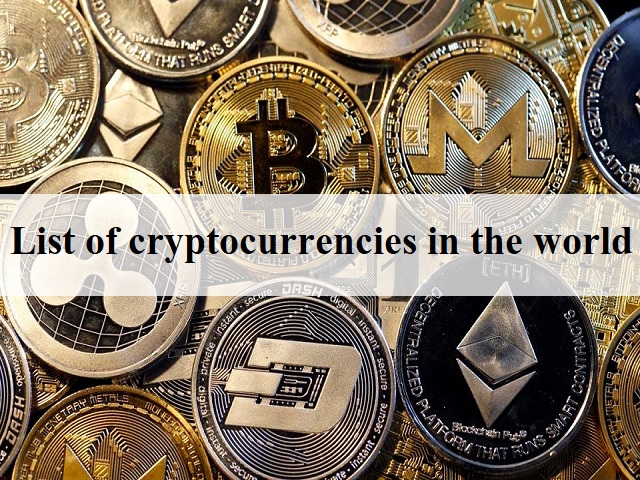Value of all cryptocurrencies
Many in the crypto space have expressed concerns about government regulation of cryptocurrencies. Several jurisdictions are tightening control over certain types of crypto and other virtual currencies https://iconicint.com/review/super-slots/. However, no regulations have yet been introduced that focus on restricting blockchain uses and development, only certain products created using it.
However, blockchain could also be used to process the ownership of real-life assets, like the deed to real estate and vehicles. The two sides of a party would first use the blockchain to verify that one owns the property and the other has the money to buy; then they could complete and record the sale on the blockchain.
Cryptocurrency and blockchain are two distinct technologies that complement each other. The blockchain serves as the underlying technology that supports the cryptocurrency network, recording all transactions and creating new blocks to record successful ones.
All the cryptocurrencies
NFTs, or non-fungible tokens, represent ownership of a unique digital file, often used for digital art, collectables, or other virtual assets. While NFTs share similarities with cryptocurrencies, such as being traded on similar marketplaces, they are not considered cryptocurrencies due to their non-fungible nature. You can read more about it in this article we wrote:
Welcome to CoinMarketCap.com! This site was founded in May 2013 by Brandon Chez to provide up-to-date cryptocurrency prices, charts and data about the emerging cryptocurrency markets. Since then, the world of blockchain and cryptocurrency has grown exponentially and we are very proud to have grown with it. We take our data very seriously and we do not change our data to fit any narrative: we stand for accurately, timely and unbiased information.
On the other hand, tokens are digital assets that are not native to a particular blockchain but are created on existing blockchain platforms, typically through tokenization. Tokens can represent various types of assets, such as utility tokens, security tokens, or non-fungible tokens (NFTs). They can be easily created using templates, where developers specify parameters like initial supply, number of decimals, and other metadata. Most tokens are created on established blockchain networks like Ethereum, using standards such as ERC-20 for fungible tokens and ERC-721 for non-fungible tokens.
To add a new coin to Blockspot.io, fill out our submission form with all the necessary details, such as name, ticker, logo, type, supply, and other metadata. The form can be accessed at Submitting a coin to our platform is completely free, and we’ll review your submission before adding it to our extensive database of cryptocurrencies.
Almost. We have a process that we use to verify assets. Once verified, we create a coin description page like this. The world of crypto now contains many coins and tokens that we feel unable to verify. In those situations, our Dexscan product lists them automatically by taking on-chain data for newly created smart contracts. We do not cover every chain, but at the time of writing we track the top 70 crypto chains, which means that we list more than 97% of all tokens.

Are all cryptocurrencies based on blockchain
A blockchain is a distributed network of files chained together using programs that create hashes, or strings of numbers and letters that represent the information contained in the files. Every network participant is a computer or device that compares these hashes to the one they generate. If there is a match, the file is kept. If there isn’t, the file is rejected.
Using blockchain allows brands to track a food product’s route from its origin, through each stop it makes, to delivery. Not only that, but these companies can also now see everything else it may have come in contact with, allowing the identification of the problem to occur far sooner—potentially saving lives. This is one example of blockchain in practice, but many other forms of blockchain implementation exist or are being experimented with.
This could become significantly more expensive in terms of both money and physical space needed, as the Bitcoin blockchain itself was over 600 gigabytes as of September 15th, 2024—and this blockchain records only bitcoin transactions. This is small compared to the amount of data stored in large data centers, but a growing number of blockchains will only add to the amount of storage already required for the digital world.
For example, exchanges have been hacked in the past, resulting in the loss of large amounts of cryptocurrency. While the hackers may have been anonymous—except for their wallet address—the crypto they extracted is easily traceable because the wallet addresses are stored on the blockchain.
Healthcare providers can leverage blockchain to store their patients’ medical records securely. When a medical record is generated and signed, it can be written into the blockchain, which provides patients with proof and confidence that the record cannot be changed. These personal health records could be encoded and stored on the blockchain with a private key so that they are only accessible to specific individuals, thereby ensuring privacy.
Alternatively, there might come a point where publicly traded companies are required to provide investors with financial transparency through a regulator-approved blockchain reporting system. Using blockchains in business accounting and financial reporting would prevent companies from altering their financials to appear more profitable than they really are.